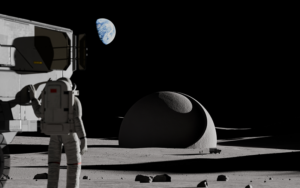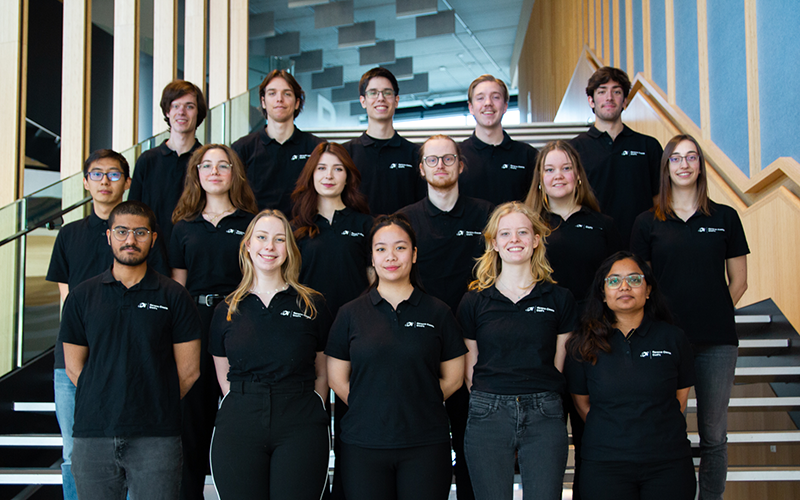Student team “Space Oasis Delft” designed a lunar village to accommodate over 150 residents. The dwellings featured biomimicry elements, a self-sustaining biosphere, and simulated day-night cycles and seasons. These smart design choices ensured the occupants’ safety and mental well-being.
Nature-inspired design
The village comprised habitats for eight people, each with a dedicated radiation shield. The design drew inspiration from nature; for example, the radiation shield’s shape was inspired by red ovenbird nests. The internal structures resembled spiral staircases, modelled after spiral sea shells, offering self-supporting stability.
Given the complexity and cost of transporting construction materials to the Moon, the team explored using local resources. They incorporated lunar regolith into the radiation shields. Each habitat also formed a self-sustaining ecosystem, reducing reliance on supply missions from Earth.

The radiation shields contain lunar regolith, inspired by the red ovenbird nest shape.

The internal structure resembles that of seashells and accommodates a self-sustaining biosphere. It mimics terrestrial seasons (left to right).
Utilising the unique lunar environment
A key design principle was ensuring that inhabitants not only survived on the Moon but also thrived in their unique environment. The biosphere, enriched with plants, played a crucial role. Additionally, a projection screen simulated Earth’s day-night cycle and seasons, enhancing the living experience. The spiral design of the structure facilitated regular interactions among residents as they moved within the habitat.
The design also featured playful elements, such as a waterfall with droplets falling six times slower than on Earth due to low gravity. This waterfall served a practical purpose by humidifying the habitat’s plants, helping to combat the monotony of living spaces and creating a more natural environment.
Taking to the global stage
The team plans to participate in the International Architecture and Innovation Competition organised by the Jacques Rougerie Foundation. They aim to distinguish themselves with a strong technical and scientific foundation, vying for the €10,000 grand prize. The competition was open to individuals and groups, including both students and professionals.
Marit Vegt, Team Manager Space Oasis Delft, says: “As the first team of Space Oasis Delft, it was important to create a foundation for both our current team and our successors. It is such a pleasure to see how different perspectives and disciplines come together in our project. There is plenty of room for new insights and creativity within our team.”




